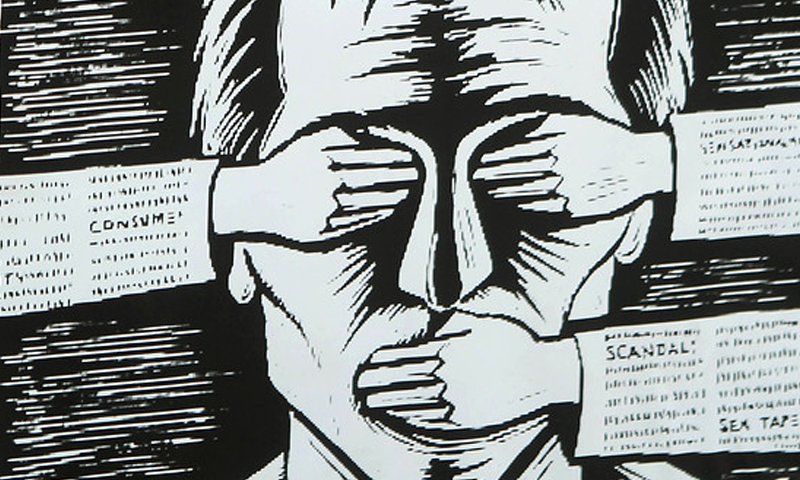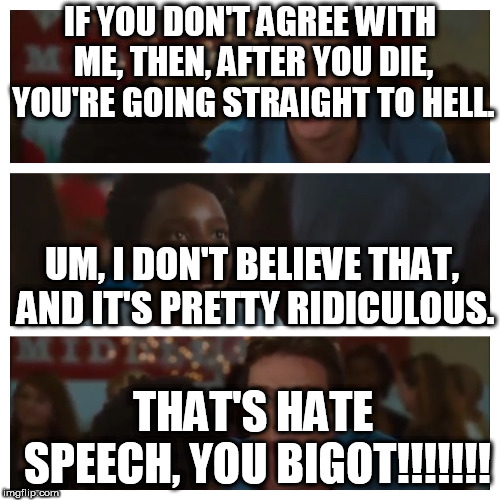


Hate speech: a manifestation of discrimination Already now, several countries around the world are using hate speech laws to suppress legitimate dissent or persecute minorities. There is a real danger that, in less democratic countries, human rights defenders, opposition leaders, academics, trade unionists, grassroot organisers and journalists are silenced through excessive restrictions on freedom of expression. Moreover, as we have seen with COVID-19 measures and with some national legislations against hate speech, European legislations and policies are frequently copied in other parts of the world. There are good reasons to do so: when freedom of expression is unduly restricted, this affects a range of other human rights, like freedom of association, freedom of peaceful assembly and media freedom. When speech does not meet the threshold of incitement to discrimination, hostility or violence, we should tread carefully and not criminalize or prohibit speech, even if hateful or hurtful, but rather turn to other measures. Regulating social media platforms is particularly complex, and the EU’s Digital Services and Digital Market Acts should strive to strike the right balance with maximum transparency. In an encouraging move, Meta’s Oversight Board has used the Rabat threshold test in several decisions, referring explicitly to international human rights treaties, principles and recommendations. To assist courts and tribunals in making this determination, the UN has developed the Rabat Plan of Action – a set of criteria to assess, on a case-by-case basis, the context, speaker, intent, content, extent of dissemination of the speech and the likelihood of harm. It can be difficult to determine when exactly speech meets the threshold of incitement to discrimination, hostility or violence, at which point it ought to be prohibited by law.

Hate speech free#
Thus, a tension exists between guaranteeing free speech and protecting individuals and communities against hate speech. The same treaty affords strong protections for freedom of expression. Instead, the International Covenant on Civil and Political Rights calls for the prohibition by law of the advocacy of hatred that constitutes incitement to discrimination, hostility or violence. The concept of hate speech is not defined in international law. Yet, hard statistics are difficult to come by, for several reasons: hate speech is often not reported the authorities may not collect this information, and, if they do, it is not necessarily disaggregated by victim group. We have also witnessed incitement to hatred against the LGBTI community, with some local authorities proclaiming their cities LGBTI-free zones, disproportionate sanctions imposed on LGBTI activists, and a worrying leniency by some authorities towards hate crimes against the LGBTI community. The double victimization of women from minority communities illustrates the intersectionality of racism and xenophobia with misogyny. During the COVID-19 health crisis we have seen an intensification of verbal insults against these communities. Hate speech also targets ethnic, racial and religious minority groups, migrants and refugees. Often, this leads to self-censorship and sometimes even to women leaving public life. More and more female politicians – even members of the European Parliament –, women activists and female journalists receive online threats, generally of a misogynistic nature. Today, we are witnessing an explosion of hate speech, amplified by social media, also in Europe, as the anonymity that social platforms afford allows users to hide behind their screens. In history, hate speech has often preceded violence leading to atrocity crimes. On 18 June, the United Nations is commemorating the first International Day for Countering Hate Speech and has launched the #NoToHate campaign. Article by Birgit Van Hout, Regional Representative for Europe, Office of the UN High Commissioner for Human Rights


 0 kommentar(er)
0 kommentar(er)
